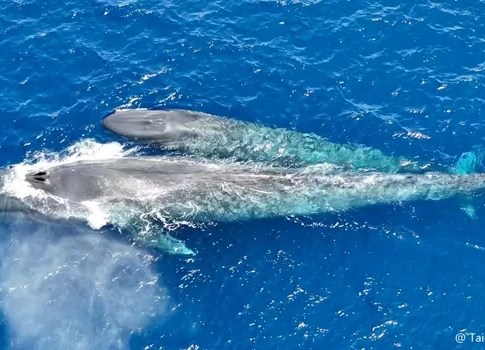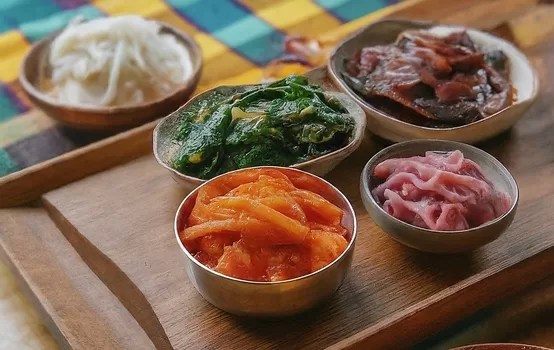Timor-Leste, a small island nation in Southeast Asia, has become a vital hub for blue whale research, offering unprecedented insights into the lives of these majestic marine giants. Thanks to the dedication of marine scientists and the support of citizen science, we now have a rare glimpse into the intimate family lives of blue whales, including the extraordinary sight of a blue whale nursing its calf underwater.
Our story on the blues whales of Timor-Leste continues after this advertisement:
A Decade of Dedication
Leading this remarkable project is Dr. Karen Edyvane, an Adjunct Senior Research Fellow at Charles Darwin University (CDU), an Associate Professor at Australian National University (ANU), and a UN-recognized expert on the Arafura and Timor Seas.
Dr. Edyvane has been conducting research in Timor-Leste since 2006. Her decade-long research, combined with the efforts of citizen scientists, has uncovered previously unknown behaviors of blue whales.

“Our decade-long research and ‘citizen science’ program has documented some of the lesser-known, intimate reproductive behaviours of blue whales, some for the very first time,” she said.
“From newborn calves and nursing mothers to amorous adults in courtship, the waters of Timor-Leste really are providing blue whale scientists with some of our first glimpses into the private lives of one of the world’s largest but most elusive animals.”
Timor-Leste: A Migration Corridor
The findings, published by the Scientific Committee of the International Whaling Commission (IWC), confirm Timor-Leste’s waters as a significant migration corridor for blue whales.
These deep, nearshore waters, particularly in the narrow Ombai-Wetar Strait along the north coast, offer one of the most accessible and optimal locations for blue whale research globally.
“Timor-Leste’s deep, nearshore waters, particularly in the narrow Ombai-Wetar Strait along the north coast of the country, provide one of the most accessible and best locations for blue whale research in the world,” Dr. Edyvane noted.
“Since 2014, our program has sighted over 2,700 blue whales in Timor-Leste’s waters, monitoring their annual migration along the country’s north coast. On a global level, these numbers are truly extraordinary.”
Insights from Long-Term Monitoring
The long-term monitoring efforts have provided invaluable insights into blue whale movements and behaviors in tropical waters. Dr. Elanor Bell, a researcher at the Australian Antarctic Division, emphasized the importance of these findings.
“The long-term blue whale monitoring in Timor-Leste is providing hugely valuable insights into blue whale movements and behaviours in tropical waters. This evidence suggests that these waters are important foraging areas for blue whales and critical for reproduction. Until now, it has been a mystery when, where and how blue whales reproduce.”
Dr. Capri Jolliffe, who has studied blue whales in Australian waters for over a decade, highlighted the differences between pygmy blue whales and their Antarctic counterparts. “This research clearly highlights that the life history characteristics and patterns of habitat use of pygmy blue whales differ significantly from their Antarctic blue whale counterparts. They really are tropical animals,” Dr. Jolliffe said.
Collaborative Conservation Efforts
Collaboration between Australian and Timor-Leste researchers has been crucial for this project. As Dr. Jolliffe pointed out, these whales undertake long migrations, crossing international boundaries.
“It also highlights the critical importance of collaboration between blue whale researchers in Australia and Timor-Leste. These animals undertake long ocean migrations, crossing maritime waters and international boundaries – we share these animals. Understanding of this population and the threats they face throughout their entire migratory range is fundamental for ongoing conservation and recovery of this species. For effective species management, support for Australia and Timor-Leste research cooperation must be a major priority.”
Timor-Leste’s National Director for Tourism and Environment Research, Jose Filipe Dias Quintas, also emphasized the role of local partnerships and citizen science in the success of the monitoring program, known locally as ‘Baleia no Golfinhu iha Timor-Leste’.
“Over the past decade, we’ve all shared a common purpose in finding out more about pygmy blue whale migration – to understand and better protect our extraordinary ocean life and also, to support the sustainability of our rapidly growing whale tourism industry,” he said.
A Shared Journey
The program has grown into a major collaboration between researchers, whale tour operators, tourists, student volunteers, and local fishermen.
This community effort has led to a wealth of shared information, images, and observations about blue whale sightings. “They’ve shared with us some amazing blue whale images. It’s really been an exciting and shared journey,” Quintas said.
Looking forward, Quintas stressed the need for continued cooperation and support from Australia and the international community to protect and conserve these magnificent animals.
“Now, we really need to use this valuable new information to ensure we fully protect and conserve these animals when they pass through Timor-Leste’s waters and beyond. For this, we urgently need cooperation and support from Australia and the wider international community.”
For those interested in seeing this incredible footage, it is available on Dr. Edyvane’s project website, offering a mesmerizing glimpse into the lives of blue whales in Timor-Leste.
This research not only deepens our understanding of these giants of the ocean but also highlights the importance of global cooperation in preserving our planet’s marine biodiversity.
Our story on the blues whales of Timor-Leste continues after this advertisement:
The Majestic Blue Whales of Timor-Leste
Timor-Leste, an often-overlooked gem in Southeast Asia, offers one of the most extraordinary wildlife experiences: encountering the magnificent blue whales.
These gentle giants, the largest animals on Earth, grace the waters of this small island nation, providing a unique and unforgettable spectacle for nature enthusiasts and marine biologists alike.
Timor-Leste’s Pristine Marine Environment
Timor-Leste’s waters are part of the Coral Triangle, a region renowned for its exceptional marine biodiversity. The country’s commitment to conservation has helped preserve its pristine marine environment, making it an ideal habitat for a wide variety of marine species, including the blue whale.
The deep waters off the coast of Timor-Leste are teeming with krill, the primary food source for blue whales, which attracts these colossal creatures during their migration.
The Blue Whale: A Marvel of Nature
The blue whale (Balaenoptera musculus) is the largest animal to have ever existed on Earth, reaching lengths of up to 100 feet and weighing as much as 200 tons. Despite their enormous size, blue whales are remarkably elusive and graceful in the water.
Their bluish-gray coloration and slender bodies allow them to blend seamlessly into the ocean, making sightings a truly special event.
Migration and Feeding Patterns
Blue whales are migratory animals, traveling vast distances between their feeding and breeding grounds. Timor-Leste lies along one of their major migratory routes, making it a prime location for observing these giants.
Typically, blue whales can be seen in Timor-Leste’s waters from October to December, coinciding with the peak of their feeding season. During this time, they feast on the abundant krill populations, which sustain their massive energy requirements.
Ecotourism and Conservation Efforts
Timor-Leste has embraced ecotourism as a means of promoting sustainable development while protecting its natural heritage.
Whale watching tours have become increasingly popular, providing visitors with an opportunity to witness blue whales in their natural habitat. These tours are conducted with a strong emphasis on responsible and ethical practices to minimize the impact on the whales and their environment.
The government of Timor-Leste, along with various non-governmental organizations, has implemented numerous conservation initiatives to safeguard the marine ecosystem.
Efforts include monitoring whale populations, enforcing regulations to prevent illegal fishing, and raising awareness about the importance of marine conservation. These measures have not only helped protect the blue whales but also other marine species that share their habitat.
The Thrill of Whale Watching
For those fortunate enough to embark on a whale watching expedition in Timor-Leste, the experience is nothing short of awe-inspiring. As the boat glides through the azure waters, anticipation builds until the moment a blue whale breaches the surface, exhaling a powerful spout of misty spray.
The sight of these immense creatures, with their distinctive blowholes and streamlined bodies, leaves a lasting impression and fosters a deep appreciation for the wonders of the natural world.

Related stories
Japan adds vulnerable Fin Whales to commercial whaling hunt
Capturing Nature exhibition ° Early scientific photography from Australian Museum
Nikonos III 35mm underwater film camera
Gas exploration set to resume offshore Sydney to Newcastle




